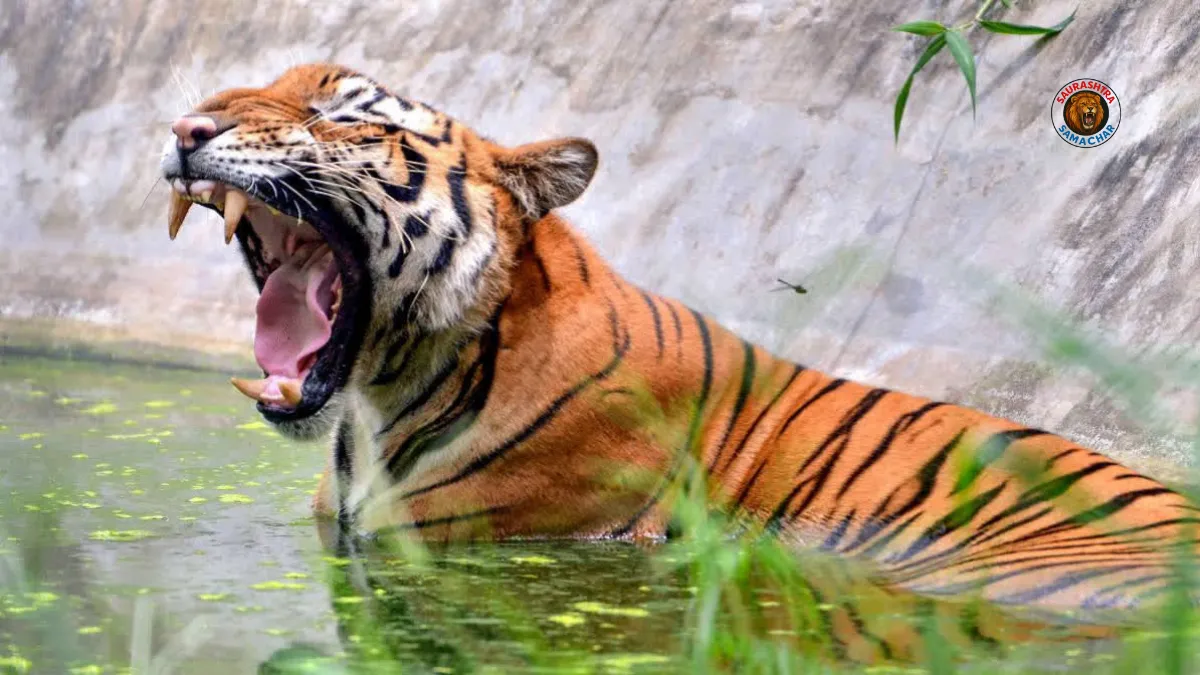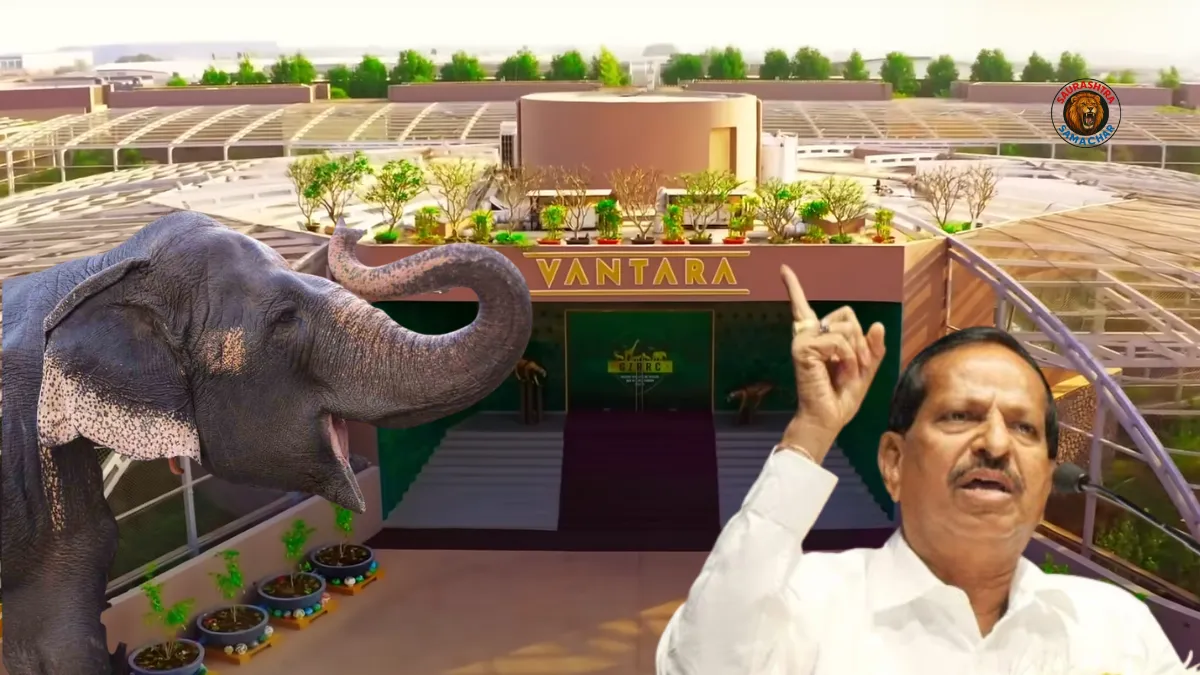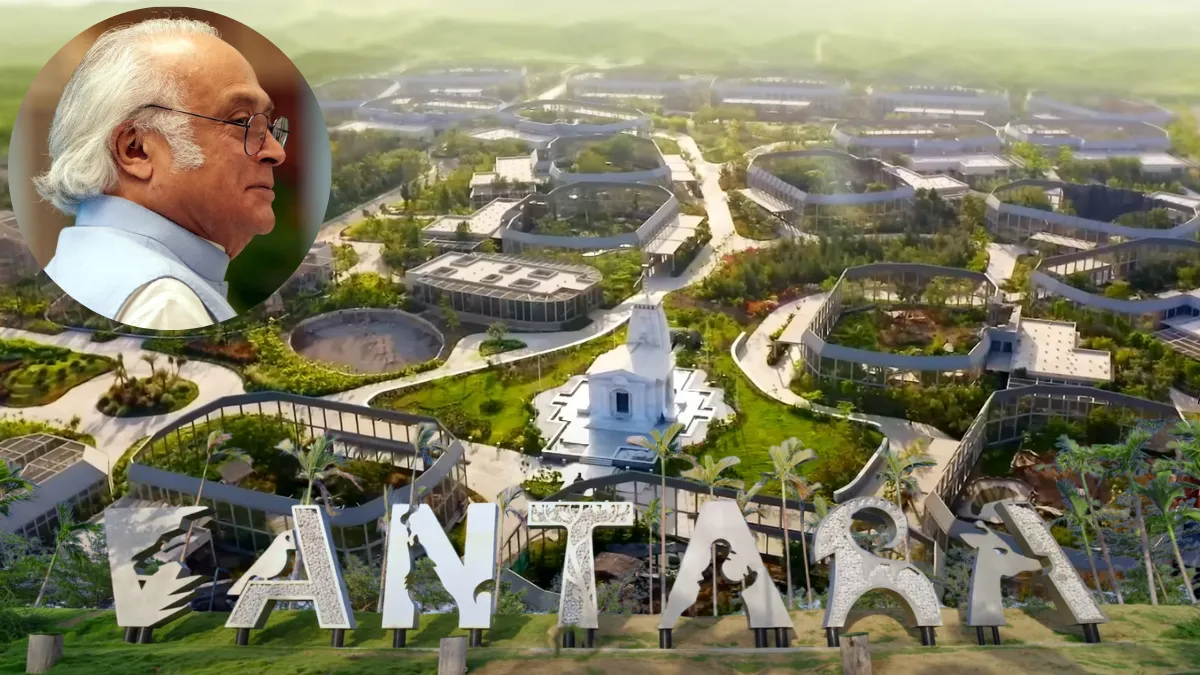Suryatara Wildlife Sanctuary: Maharashtra is currently facing one of its biggest wildlife conservation challenges in recent years. In just three months, the state has lost 23 tigers, raising concerns about poaching, starvation, and gaps in forest management. At a time when questions are being raised about the state’s conservation policies, the Maharashtra government has revealed plans to establish a new Suryatara Wildlife Sanctuary, modeled after Anant Ambani’s highly acclaimed Vantara project in Jamnagar, Gujarat.
The initiative is expected to become a turning point in the way Maharashtra handles wildlife rescue, rehabilitation, and long-term conservation. By collaborating with industrialist Anant Ambani, the government hopes to replicate the success of Vantara, which today shelters more than 2,000 animals across 43 species.
Rising Tiger Deaths in Maharashtra – A Cause for Alarm

Wildlife experts, conservationists, and citizens are alarmed by the recent statistics released by the state forest department. Maharashtra currently has a tiger population of 446, with the highest concentration in Chandrapur district. However, despite this strong population base, the state has witnessed the deaths of 19 tigers due to natural and man-made reasons and an additional four tigers falling prey to poaching in the last three months alone.
Forest Minister Ganesh Naik, who has been personally monitoring the situation from Nagpur, admitted that starvation was one of the key reasons behind some of the deaths. This suggests that prey base, habitat management, and territorial distribution may not be adequately maintained across tiger landscapes.
The forest department has come under scrutiny, as many conservationists argue that the rising mortality indicates systemic failures. Unlike Gujarat’s success story with Vantara, where private initiative has ensured global-level care and rehabilitation, Maharashtra’s machinery is struggling to address both poaching syndicates and habitat challenges.
Suryatara Wildlife Sanctuary – Maharashtra’s Vantara-Inspired Vision
To strengthen conservation measures, Maharashtra has planned a new project called the Suryatara Wildlife Sanctuary. Inspired by the Ambani family’s Vantara initiative, the proposed sanctuary will be developed in Thane district and will serve as a hub for wildlife rescue, medical treatment, rehabilitation, and long-term care.
Forest Minister Naik confirmed that the government has formally approached Anant Ambani for support in this endeavor. A letter has already been sent to him, and land for the sanctuary has been identified. The move signals a major public-private collaboration for wildlife protection in India.
Vantara, located in Jamnagar, Gujarat, has set a benchmark in conservation by offering world-class veterinary facilities, spacious enclosures, natural habitats, and long-term rehabilitation care for injured and rescued animals. If successfully implemented, the Suryatara Wildlife Sanctuary could not only reduce mortality rates among wild animals in Maharashtra but also create a global model for wildlife management.
Broader Forest Department Initiatives
While the Suryatara project is being finalized, the state government is simultaneously working on multiple fronts to improve wildlife protection and generate revenue for forest development.
1. Tree Plantation for Habitat Enrichment
The government has directed plantation of fruit-bearing trees in forest core areas to ensure that herbivores have enough food. This move is expected to minimize human-animal conflict, as well-fed herbivores will attract carnivores like tigers and leopards to remain inside the forest.
2. Revenue through Agriculture and Bamboo Plantation
To generate revenue, the Forest Development Corporation has been asked to cultivate bamboo on available land. Additionally, fruit crops like Mosambi in Marathwada, Oranges in Vidarbha, Grapes in Nashik, and Pomegranates in Western Maharashtra are expected to create income streams through juice production.
3. Furniture Manufacturing Factories
Fulfilling the vision of former forest minister Sudhir Mungantiwar, the government is working on setting up furniture factories across Maharashtra using forest wood. With an estimated budget of ₹70 crore, factories will start operations in the next seven months, boosting employment and revenue.
4. Solar Energy Projects
To utilize substandard forest land, the department is exploring solar panel installations to produce renewable energy. This step will enhance eco-friendly energy generation and reduce dependency on conventional sources.
5. Modern Firefighting and Anti-Poaching Measures
In 2025, not a single forest fire was reported in Melghat Tiger Reserve. To further strengthen fire management, drones worth ₹50 lakh are being procured, along with helicopters for emergency dousing operations. At the same time, the forest department is tackling poaching more aggressively. Investigations have revealed that poachers no longer reside in forest villages but operate from urban areas with international connections.
Why Suryatara Wildlife Sanctuary is Crucial for Maharashtra
The proposed Suryatara Wildlife Sanctuary carries far-reaching importance for Maharashtra’s ecological balance and global conservation image.
- Wildlife Rescue and Care: Many wild animals, including leopards, sloth bears, and birds of prey, are injured due to accidents, snares, or conflict with humans. A dedicated rescue center will ensure scientific treatment and rehabilitation.
- Tiger Conservation: With tiger deaths rising, Suryatara will play a key role in preventing mortality by providing medical interventions and controlled habitats for distressed big cats.
- Human-Animal Conflict Reduction: By rehabilitating problem animals and providing food security within the sanctuary, incidents of tigers and leopards straying into villages may decline.
- Global Recognition: Like Vantara, which has become a conservation landmark, Suryatara could put Maharashtra on the global wildlife tourism and research map.
Public-Private Partnerships in Wildlife Protection
The decision to involve Anant Ambani underscores a broader trend of public-private partnerships in environmental conservation. While governments often struggle with budgetary and bureaucratic challenges, corporate-backed initiatives can bring advanced facilities, international expertise, and faster execution.
Ambani’s Vantara project has shown how such collaborations can create sustainable ecosystems for animal welfare. If the same model is replicated in Maharashtra through Suryatara, it may inspire similar projects across India in states like Madhya Pradesh, Karnataka, and Assam, which are also home to large tiger populations.
Also read: Is Vantara Legal in India? Laws, Permissions, and Controversies Explained
Challenges Ahead for Suryatara Sanctuary
While the plan looks promising, several challenges need careful handling:
- Funding and Execution – Large-scale sanctuaries require massive investment. Ensuring timely funds and transparent execution will be crucial.
- Local Community Involvement – The success of conservation depends on engaging local communities and creating livelihood opportunities for them.
- Poaching Networks – International poaching syndicates remain a threat. Advanced surveillance and strict legal action are needed.
- Long-Term Sustainability – Sanctuaries should not just be symbolic but must focus on scientific conservation, eco-tourism, and sustainable management.
Also read: Vantara Zoo Online Ticket Booking: Complete Guide with Prices, Timings & Visitor Tips
Conclusion – A New Chapter for Maharashtra’s Wildlife
The establishment of the Suryatara Wildlife Sanctuary could mark a turning point in Maharashtra’s wildlife history. At a time when the state is grappling with rising tiger deaths, poaching threats, and human-animal conflicts, this ambitious project offers hope for a better future.
By partnering with Anant Ambani and drawing inspiration from the Vantara sanctuary in Gujarat, Maharashtra has the opportunity to create a state-of-the-art conservation model that blends science, compassion, and sustainable development.
If executed effectively, Suryatara Wildlife Sanctuary will not only save countless animal lives but also restore public confidence in the state’s conservation policies, while positioning Maharashtra as a leader in India’s wildlife protection movement.














